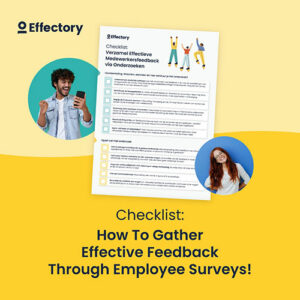Nowadays most organizations are specifically looking for young, talented and highly educated people. While they are heavily investing to recruit these young skilled employees, they struggle to hold on to them once they have been working in the organization for a while. In this blog I will explain how you can ensure these employees stay on board.
How to hold on to young talented employees?

It is widely known that generation Y and Z generally change jobs quite frequently. They are known for not being afraid to switch to another employer every few years. This is not because they are extremely dissatisfied with their work, as they often rate their employer a C or C-. Rather, they are looking for a place with an A or A-. Work has to be inspiring and they should be challenged and able to develop themselves. This gives them satisfaction and happiness.
Seeing the above, it is no surprise that talent management is a hot topic for HR professionals. It can be extremely strenuous to hold on to young skilled employees, inasmuch as they are not afraid to let go of a sense of security or certainty that previous generations are more likely to hold on to. Millennials generally have a different attitude – and why wouldn’t they? They are chased after by recruiters and can find new employment in a split second.
The cost of people leaving
For organizations on the other hand, there are high costs to acquiring good employees. First of all. an investment in employer branding and recruitment is made. This then should be followed by an onboarding track and intensive coaching of the new employee. Often it takes a few months until the new employee will be a 100% operative within the organization. If this employee choses to leave after one or two years, it is not worth the investment at the end of the line.
For this reason, it is extremely challenging for organizations to deal with people leaving in the short term, as it requires quite some resources to find and onboard the people in the first place and it is still not certain that they will stay. American researchers Heather Boushey and Sarah Jane Glynn analyzed 30 studies about the cost of employee attrition. They found that the cost to find a replacement comes down to a shocking 20% of an annual salary on average.
Employee Engagement Survey
Run your engagement survey and gather feedback from your employees. Discover Effectory’s engagement survey action planning template.
view solutionOn top of this, team analysis done by Effectory shows that the repeated onboarding of new employees burdens the existing employees in a team. They need to invest a significant amount of time on coaching and answering questions, valuable time that cannot be spent on their own work or helping customers. How to keep such a far-from-ideal situation from happening over and over again? How can a working environment that captivates employees for the long term be created? Below I will outline what we can learn from the World Class Workplace contestants with regard to those challenges.
Secrets of a World Class Workplace
Every year Effectory conducts research on the employee satisfaction rate of over 1000 organizations. This research indicates that the top employers attract up to 50% more applicants and are significantly more successful in holding on to them. The organizational culture of these employers has the following seven characteristics:
1. Inspiring management
The management is perceived as being inspiring when they mingle with the employees and engage in direct conversations. Also, they continuously advocate what the organization stands for and where it is going. This can easily be seen by the fact that they do not spend all their time in the board room, but are regularly in the workplace with all other employees.
2. Appealing vision
Young employees want to contribute to the world. They are looking for meaning in the things they do at work and question themselves if it is relevant. Therefore, it is particularly important to frame your vision clearly in order for employees to understand what they are doing their job for.
3. Less rules and bureaucracy
It is proven that employees perform best when there are less rules and protocols they have to abide to. Popular employers therefore create a working environment based on trust as opposed to control. The result is more important than the process.
How to gather feedback from your employees
The definitive checklist for creating your employee engagement survey.
Download4. Less managing
According to Nyenrode Business University professor on strategic talent management Lidewey van Sluis, a modern leader is like a gardener who knows how to work the earth in such a way that the people get the opportunity to grow. Managers are therefore servants: they need to create the right conditions through which talent can emerge and grow. Managing employees less thus is a characteristic seen with lots of popular employers.
5. Value expertise
Popular employers ensure that experts are recognized in the value they deliver. These experts are on the frontline of an organization and do lots of hands-on work. At popular organizations they are lifted up by their management accordingly.
6. Social innovation
In the workplace, employees know best. Why skip their input on what can be done better and smarter? After all, they are the ones with all the hands-on experience. Popular employers use this knowledge to innovate in their organization, and to get this information. As such, they continuously ask their employees about their opinions and ideas.
7. Share information
Employees are extremely motivated if what they contribute to the performance of an organization is visible. This is why a transparent way of working takes preference for a lot of employers. Openness, honesty and sharing insights is what makes employees capable of moving forward to a higher level within the organization.
Do you want to know more?
Do you want to know more about holding on to talent in your organization? Guido Heezen, HR trend watcher and founder of Effectory, recently hosted a webinar on this subject. You can watch it here.
